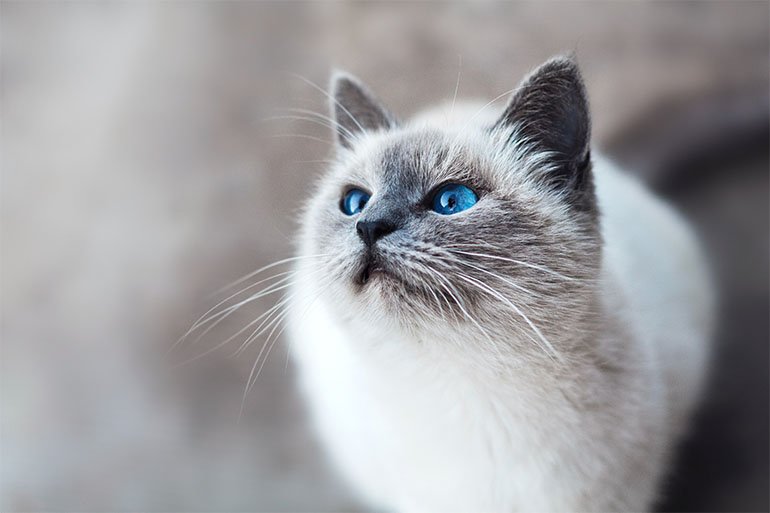Pet Search is a mother-daughter run blog. Together we have over 40+ years of professional pet grooming experience and we hope to pass some of that on to our readers throughout our in-depth and non-bias reviews and buyers guides.
We do not accept sponsored posts however we do include affiliate links throughout our posts and we receive a share of the revenue generated from your purchase which contributes to the running of CleanerPaws.com.
This review guide was updated in February 2019.
As a cat owner, it is more than likely you have had to face the dilemma of trying to choose the best cat litter for your feline baby.
Even though we may be preaching to the converted we just wanted to offer a very quick crash course on why it so important you choose the right type of litter for your pet.
Going back to basics, cat litters are boxes filled with special sand-like materials which cats use to do their business. By doing their business we mean peeing and pooping. Not exactly a glamorous topic…right?
Even though it does not sound fabulous, the invention of cat litters has made the lives of cat owners worldwide far cleaner! Not only are cat litters practical and easy to use but as cats are naturally clean animals they often prefer using litter trays.
Why does cat litter track?
As amazing and practical as cat litter is, it does sometimes have its disadvantages. For anyone that has a housebound cat, we’re sure the biggest issue you face on a daily basis is the cat litter tracking. In a nutshell, feeling and stepping on tiny bits of litter sand beneath your feet can be part and parcel of owning a stay at home cat. Unfortunately, it is not a pleasant one and in fact, it is quite messy and annoying.
Cats track litter sand around the house without being aware of it so it is no use blaming your lovable pet. Luckily there are some simple but effective ways of preventing cat litter tracking, these include:
- Using a different type of litter box
- Implementing litter control techniques
- Changing the amount of litter used
The most important part is finding an ideal litter box for your pet. There are several options here:
Purchasing an oversized litter box – if your cat’s litter box is too small, cats are more likely to kick the litter out. The sides of the box should also be high enough to contain the litter inside.
Using litter boxes with tracker traps – some litter boxes have built-in tracker traps specifically designed to absorb the litter from the cat’s paws.
Placing the litter box inside another larger box – nesting your pet’s litter box inside another box with shallow sides prevents the litter from scattering around. A simple cardboard box can serve as a containment method.
Using covered litter boxes – these boxes significantly reduce the amount of kicked litter but are not 100% efficient because their front entrance is still open. In addition, some cats refuse using covered litter boxes because they keep the odor inside, meaning the smell isn’t always so pleasant for them when they initially step into it.
Using top entry litter boxes – these boxes are closed from every side except on the top. However, they are not suitable for old and arthritic cats.
If you’ve tried some of the different types of litter boxes explored above yet still can’t stop cat litter from being tracking, implementing litter control techniques may be your best bet, here are some of the most effective:
Placing a scatter mat under the litter box – these mats allow your cat to wipe its paws when it leaves the box. They absorb the litter and prevent it from scattering. There are many different types of scatter mats including plastic, sisal or fake grass-like mats.
Changing the type of litter – generally speaking, litters are categorized as clumping and non-clumping. Both types can be made of a variety of materials. However, cats prefer fine-grained litters, but coarser litters are less likely to scatter.
Vacuuming or sweeping around the litter box on a daily basis – this option is time-consuming and quite boring but effective. Additional guide here – https://www.petsearch.com.au/best-pet-hair-vacuum/
Finally, if you’ve exhausted some of the methods laid out above it may be time for Plan C.
Calculating the correct amount of litter to put into your pet’s litter box may not be as easy as it sounds and it could be that you’re simply overfilling the box.
Simply put, too much litter makes it easier for the cat to scatter it around, while too little litter encourages your pet to dig harder, thus once again increasing the chances of scattering.
Ideally, the litter box should be filled with one to two inches layer of litter.
Benefits of cat litter that doesn’t track
Non-tracking cat litters are typically made of absorbent pellets or clay.
They are specifically designed to keep the cat’s excretions inside and to prevent them from smelling.
Most importantly, non-tracking cat litters help keep your home clean by not allowing your cat’s poop and pee to be spread around the house.
When choosing the best non-tracking cat litter, there are several factors that need to be taken into consideration. These include:
The quality of the material the litter is made of – high-quality materials reduce the risk of having the litter scattered around the house.
The shape and size of the litter granules – generally lightweight and finer grained litters are more liable to tracking because they tend to stick to the cat’s paws and fur.
Clumping vs. non-clumping litters – clumping litters may track more than non-clumping types. Clumping litters are designed to stick and therefore can become easily attached to your cat’s paws and fur.
How to keep your cat’s litter box clean
Keeping the overall hygiene of the litter box on a satisfactory level helps reduce excessive tracking. To summarise, the best way of keeping the cat’s litter box clean is by following these simple steps:
- Scooping the poop and grounded pee on a daily basis
- Frequently changing the litter
- Using a litter box with high sides or eventually using covered litter boxes
- Placing mats under and around the litter box
- Trimming your cat’s fur around the paws and ankles
- Using a hand vacuum to clean the area around the litter box.
All in all, cat litter boxes are real lifesavers, especially if they do not track.
Finding the ideal non-tracking litter for your cat may be challenging and time-consuming and unfortunately, there is no ideal non-tracking litter solution. However, we hope we have outlined some helpful tips in this article so you can find the perfect cat litter that doesn’t track.

